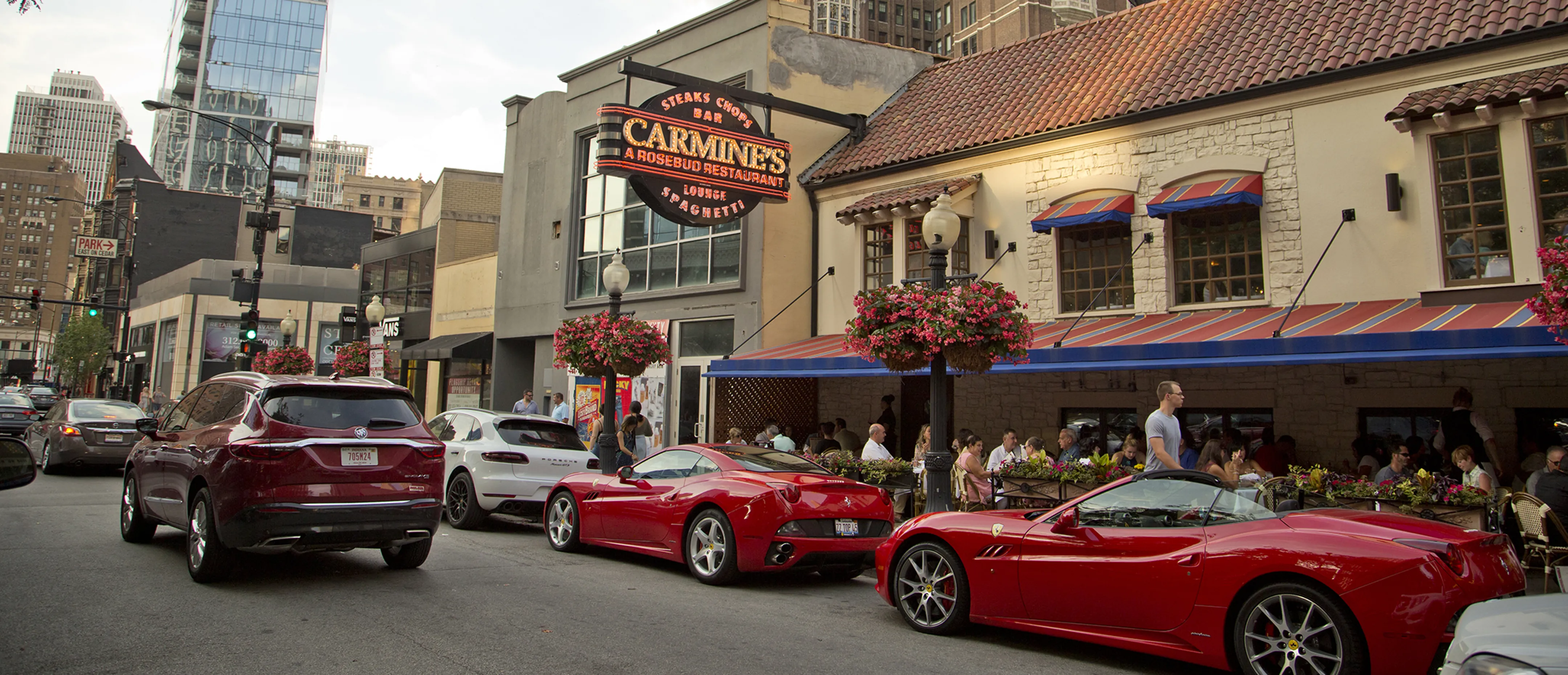History in Gold Coast
National Landmarks
James Charnley House
The Charnley House was the product of a creative collaboration between Louis Sullivan and Frank Lloyd Wright. Sullivan hired Wright in 1897 to be a draftsman, and Wright helped with the residential commission of the Charnley House, which was completed in 1892 at 1365 North Astor Street. Charnley was a lumberman who came to Chicago to start a business with his brother and brother-in-law. The Charnley House was designated a Chicago landmark on August 20, 1972, and it became a national landmark on August 5, 1998.
860-880 North Lake Shore Drive Apartments
These 26-story twin glass towers stand 46 feet apart and were designed by ludwig Mies van der Rohe and started a new era in architecture. Construction was completed in 1951, and the buildings were given landmark status on June 10, 1996. They were the first buildings designed by van der Rohe to become Chicago landmarks. They are commonly known as the "Glass House" apartments.
Astor Street District
This section of the gold coast was designated a landmark on December 19, 1975.
Charnley House
Designed by Adler and Sullivan, the Charnley House was completed in 1892 for James Charnley, a Chicago lumberman. The house was renamed the Charnley-Persky house in 1995 after Seymour Persky bought it and donated it to the Society of Architectural Historians. It was designated a landmark on August 20, 1972.
East Lake Shore Drive District
This section of the city, which includes seven luxury high-rise apartment buildings and the Drake Hotel, was designated a landmark on April 18, 1985.
Fisher Studio Houses
An Art Moderne-style house, Fisher Studio House was built in 1936 by Edgar Miller and Andrew Rebori for Frank Fisher, Jr. The city designated it as a landmark on July 31, 1996. There are 12 units in the complex, all of which share a courtyard.
Lathrop House
This gregorian style house was built in 1892 by Mckim, Mead & White. Today it is the home of the fortnightly of Chicago, the city's oldest women's organization, founded in 1873. The house is closed to the general public, but tours are available. This house was designated as a landmark on May 9, 1973.
Madlener House
This prairie school house was built in 1902 by Richard E. Schmidt and Hugh M.G. Garden for Albert F. and Elsa S. Madlener, who were liquor wholesalers. It is home to the graham foundation for advanced studies in the fine arts, which purchased the building in 1963. A unique feature of the three-story house is its off-center front door. Bedrooms are located on the second floor, and the third floor is a large ballroom. It was designated as a landmark on March 22, 1973.
History in Gold Coast
Trivia
Bughouse Square
From the 1910's through the mid-1960's, Washington Square Park was popularly known as “BugHouse Square” at 901 North Clark Street and served as a frequent summer destination for all manner of political and other discourse, and anyone inclined could simply stand up and speak his or her mind. It was the American answer to “Speakers’ Corner” in London. According to the Encyclopedia Of Chicago, its “heyday” was in the 1920's and 30's when “poets, religionists, and cranks addressed the crowds, but the mainstays were soapboxers from the revolutionary left.” During the height of its popularity, as many as 2,000 people reportedly showed up to tune into the evening’s political discourse. The once-popular “Dil Pickle Club,” a Bohemian hangout near Bughouse Square between 1917 and 1935, was formed by regular orators from the park. By the 1960's, BugHouse Square had become a popular gay meeting place.
The word “BugHouse” was based on the slang term for a mental institution. Since 1986, the Newberry Library has sponsored an annual series of summer debates, aptly known as the “Bughouse Square Debates.”
First Playboy Club
Hugh Hefner's first Playboy Club opened at 116 East Walton Street on February 29, 1960. The club was so successful that Playboy soon opened 40 more locations around the world. Prior nightclubs that operated here included the Colony Club and the Cameo Club. The four story building, owned by Arthur Wirtz, was later demolished to make way for 900 North Michigan Avenue.
The Original Playboy Mansion
Architect David Alder designed and built this mansion for George Swift Isham in 1899 at 1340 North State Parkway. Hugh Hefner acquired it in 1959. the front door bore a brass plate with the Latin inscription: "Si Non Oscillas, Noli Tintinnare," which translates to "If you don't swing, don't ring."
The Playboy Building Chicago
The building at 919 N. Michigan Ave, known as the Playboy Building between 1965 and 1990, was the third headquarters for the magazine. Previously, Playboy's offices were at 11 East Superior Street in River North Chicago and 232 East Ohio Street in Streeterville Chicago.

